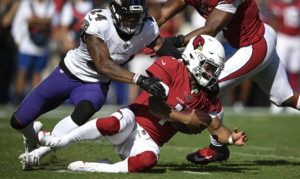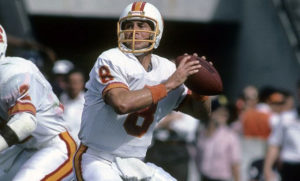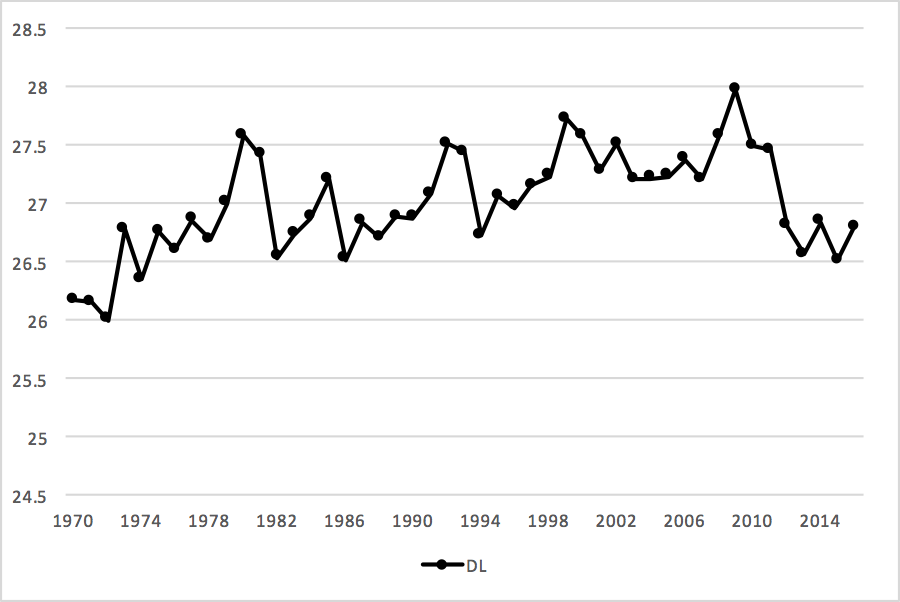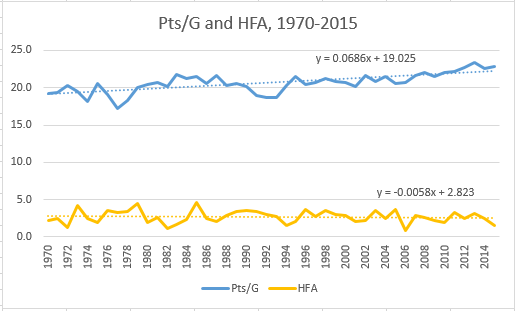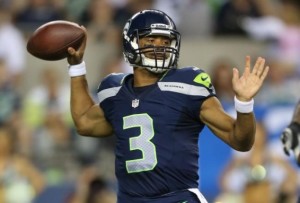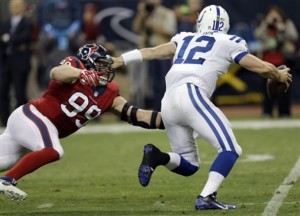An interesting article from Kevin Clark at The Ringer this week, arguing that the NFL has an age problem. Let’s start by acknowledging that there are two claims in that statement: one, that the NFL is getting younger, and two, that this is a problem. I am only going to address the first one, but feel free to discuss either one in the comments.
The reason I’m not going to address the second point is that it is much tougher to analyze objectively. While Clark’s argument could be true, it’s no more convincing than Jason Lisk’s argument to the contrary: i.e., if a league is getting younger, that may be a sign that a league is getting stronger. A youth movement could be a signal that the prior generation of stars was unable to sustain their dominance as they aged because talented new blood was replacing them. Had a bunch of less-talented players entered the last few drafts, those aging stars would have held on, so a young league means a stronger league. Of course, that is just a theory, too. In reality, I feel very comfortable stating that the rookie wage scale is playing the dominant role in the youth movement in the NFL.
And yes, getting back to the first claim, there most certainly is a youth movement in the NFL. Here is a graph showing the weighted (by AV, naturally) age of the entire NFL for each year since 1970, with age being calculated as of 9/1 of each year.

As you can see, there has been a noticeable decline over the last five years, coinciding with the new CBA in 2011. In 2010, the average age was 27.5 years; last year it was down to 27.1, with nearly all of that decline happening in 2011, 2012, and 2013.
And, to further support some of the claims in Clark’s article, yes, offensive linemen are getting younger, too. Here’s the same graph again, but with two changes: one, the Y-Axis goes from 26 to 28 instead of 25 to 29, and two, I have included just the average AV-weighted age of offensive linemen in orange.

So it does seem that offensive linemen are getting younger at a pretty dramatic rate. But again, I’m not so sure that’s a bad thing, or even whether a decrease in quality is something we can measure. Consider that Clark’s article argues that the quality of play at the position is going down, and that Packers coach Mike McCarthy “is particularly concerned about the end of veteran lines, which were staples of the league when he entered as an assistant in 1993.” In another part, John Harbaugh is quoted as bemoaning that offensive linemen don’t know where “blitzers are coming from.”
Okay, but then in a different section, Clark quotes longtime NFL executive Phil Savage bemoaning the decline of defenders in the front seven:
“Look at edge pass rushers, outside linebackers,” Savage said. “A lot of them are one-trick ponies in college. They rely on speed, then they go to the NFL and get locked up and they don’t have a counter move. They can’t get reps at full speed, you can’t replicate this stuff in practice, and then when it’s a real game it’s very difficult.”
If line play is worse on both sides of the ball, is that something really detectable? It seems odd to me to argue that both offensive line play and the quality of play in the front seven are both in decline. That would seem to wash itself out, and certainly be hard to see with the naked eye.
What do you think?

